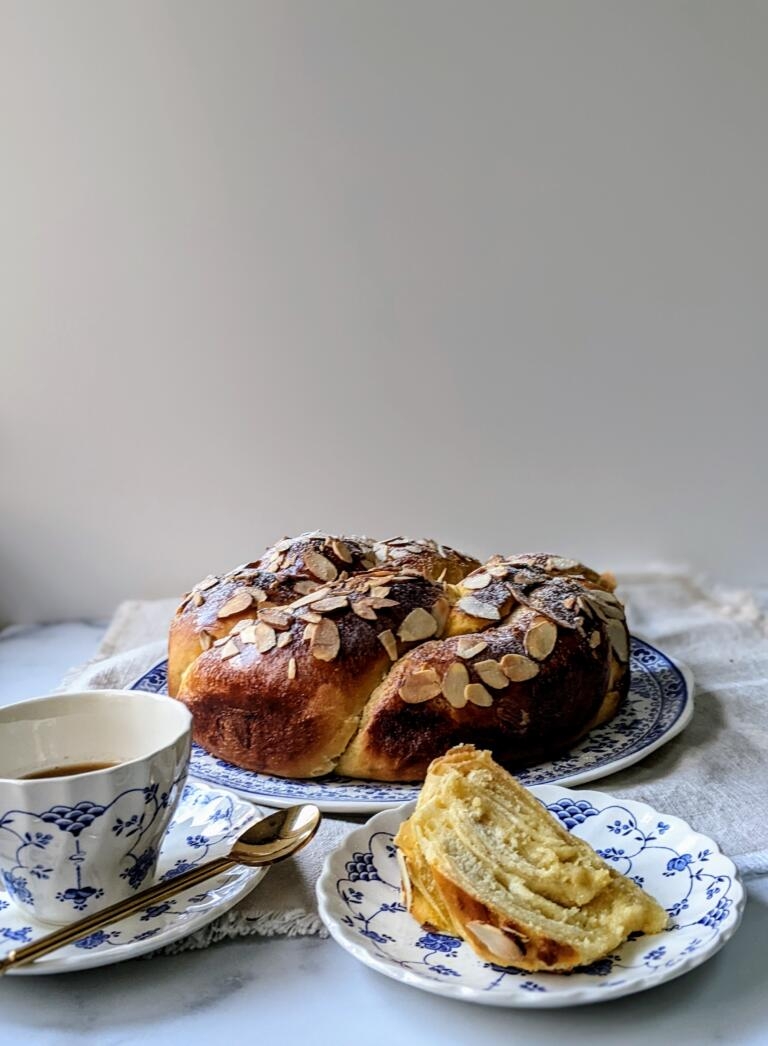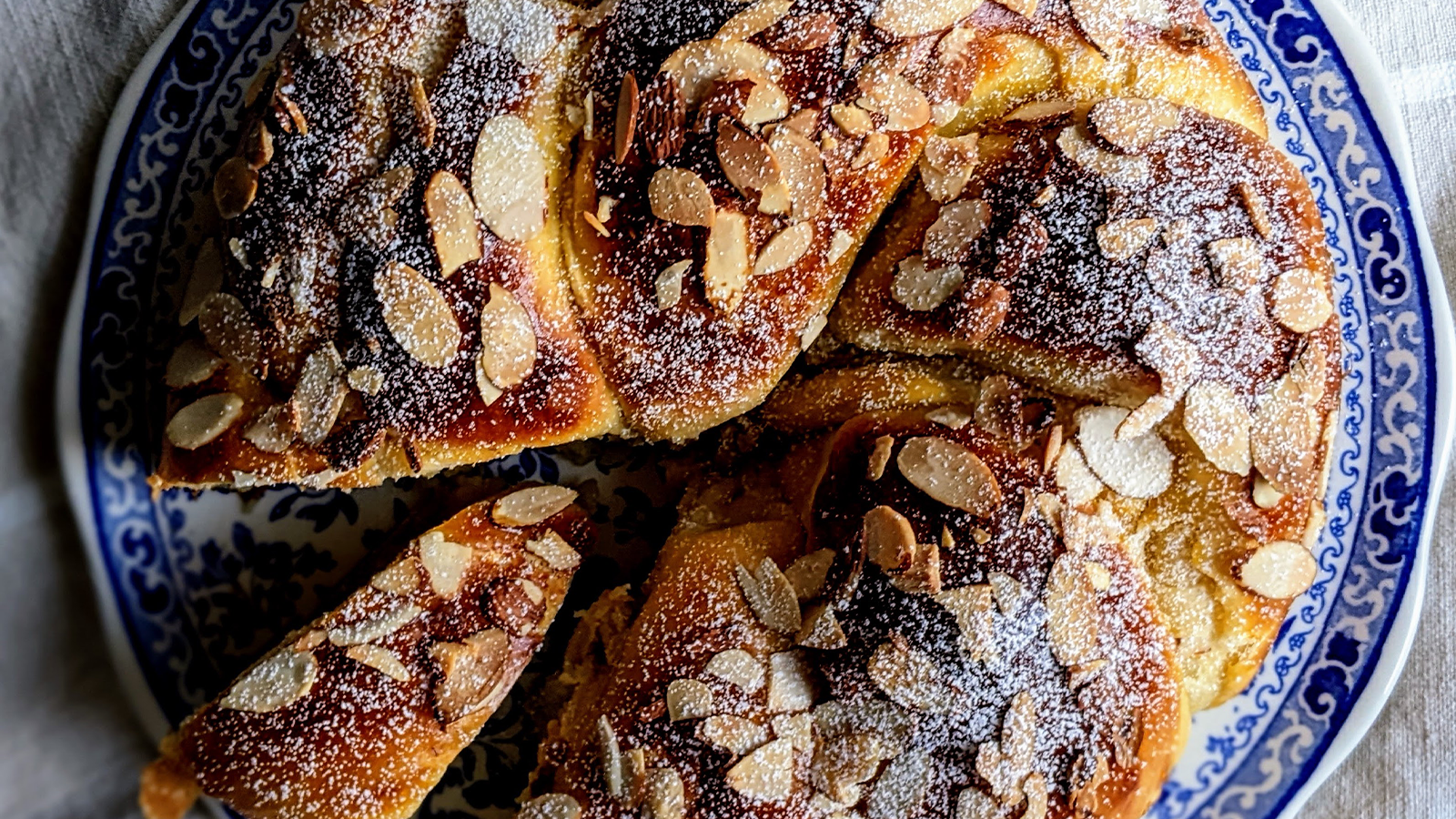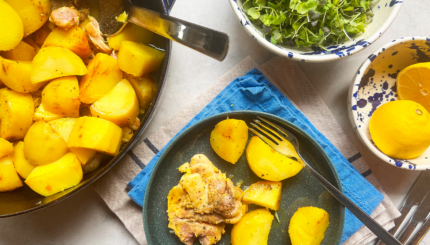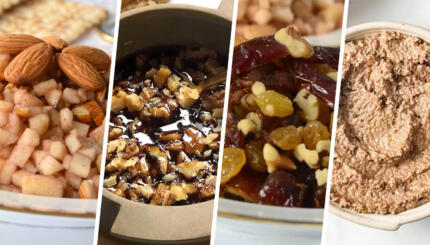Before I opened WildHeart Baked Goods, a cottage home bakery which specialized in challah, I was a novice baker. When I first got married, it was my mother-in-law who ignited my love of bread baking. Her ease with dough busted the myth that bread baking is difficult. So began my journey. Each week I baked, each week I became a better baker. My bread and my challah began to develop personality… my personality. Afterall, that’s what bread is; an embodiment of the baker, filled with their hopes, their dreams and their spirit.
My favorite bread to both bake and eat is challah, but not the challah you serve for Shabbat dinner. My ideal challah is served the next morning, for breakfast. There is something magical about Shabbat morning and Shabbat breakfast. The world almost stands a little still. Growing up, my most vivid Shabbat morning memories were at my aunt and uncle’s table filled with an array of special cakes and danishes served alongside tea and coffee. It was a special treat. As an adult, I try to bring that special Shabbat morning of pastries and cake into my own home with the concept of a breakfast challah. I began creating breakfast challah with leftover dough filled with cinnamon and sugar. Over the years, I have created many flavors of breakfast challahs that embrace the flavors of the season.
Winter breakfast challah will always be filled with bright citrus and marzipan. Marzipan, a traditional confectionary of Mizrahi, Sephardi and Eastern European Jews alike, is an unlikely breakfast food. However, when laminated into challah, it results in a delicate cross between challah and pastry, reminiscent of an almond croissant. The layers of the challah fall away in delicate folds of citrus-infused butter and fresh marzipan. Baked in a traditional babka crown shape, this challah makes the perfect centerpiece for your next brunch when the snow is deep and the days grow short.
Notes:
The Nosher celebrates the traditions and recipes that have brought Jews together for centuries. Donate today to keep The Nosher's stories and recipes accessible to all.
- The temperature of the water should be delicately warm enough as for a baby’s bath. For those of you who don’t make it a habit of bathing babies; place a finger to the bottom of the cup of warm water. Keep it there a few moments. If it feels nicely warm without an “ouch” sensation, the water is the proper temperature.
- If your marzipan feels a little too dry (it can happen, weather depending) add ½ Tbsp more water and blend it in.
- If you don’t have an angel food cake pan (which is a tube pan with a flat bottom), you can use a Bundt pan. The inner ring of metal in these pans is essential for baking success because it allows airflow and heat to get to the center of the challah and create an even bake.

Almond Croissant Breakfast Challah Recipe
With swirls of citrus-infused butter and homemade marzipan.
- Total Time: 3 hours 25 minutes
- Yield: 1 large challah, 10-12 servings
Ingredients
For the challah:
- 1 cup warm water (see notes)
- 1 Tbsp + 1 ½ tsp active dry yeast
- 1 tsp sugar
- 500 g bread flour (roughly 4 cups), plus more for kneading
- 1 Tbsp + 1 tsp kosher salt
- ¼ cup sugar
- 2 eggs, lightly beaten
- ¼ cup extra virgin olive oil, plus more for greasing bowl
For the marzipan:
- 1 ½ cups almond flour
- 1 ½ cups powdered sugar
- 2 tsp almond extract
- 2 tsp disaronno liquor or rum
- 2 pinches kosher salt
- 3 Tbsp water (see note)
For the citrus butter:
- 1 stick (113 g) unsalted butter, softened
- zest of 2 large tangerines/clementines, roughly 2 heaping tsp
- 1 Tbsp bread flour
For the topping:
- 1 egg yolk
- ½ tsp water
- sliced almonds, for topping
- powdered sugar, for finishing (optional)
Instructions
- Start by making the challah dough: In a small bowl, combine warm water, yeast and 1 tsp sugar. Mix well and let it rest about 5 minutes, or until yeast has bloomed/foamed up. (If your yeast has not bloomed/foamed up by this point, your water was too warm or your yeast is dead.)
- In a large mixing bowl, combine the flour, kosher salt and ¼ cup sugar. Mix well to combine.
- Add the eggs, olive oil and yeast/water mixture. Stir with a dough whisk or wooden spoon to create a rough, shaggy dough.
- Pour the dough onto a clean kitchen counter and begin kneading the dough by pushing the dough with the palm of your hands, dragging it forward on the counter, and then folding it back over itself. Give it a quarter turn between each knead.
- Depending on the weather, the dough may be sticky, so add a little additional flour as you knead (anywhere from ¼ -⅓ cup), until the dough is slightly smooth and supple, but still has a little tackiness left.
- Lightly coat your mixing bowl in a few tablespoons of olive oil. Put the dough in the bowl and give it a little swirl around. Flip the dough over so all sides have been covered with oil.
- Wrap the bowl in plastic wrap, cover in a towel, and let the dough rise in a warm place for 45 minutes, until the dough has doubled in size.
- After 45 minutes, fold and punch the dough dough four times, giving the dough a quarter turn between each fold and punch.
- Cover the dough back up and allow it to rise another 35 minutes. While the dough rises, make the citrus butter: In a small bowl, combine the soft (but not melted) butter and clementine zest until fully incorporated. Add the flour and mix until fully combined. Set aside.
- While the dough continues to rise, make the marzipan: In a bowl of a food processor, combine the almond flour, powdered sugar, almond extract, liquor/rum and kosher salt.
- Pulse the processor a few good whirls until the ingredients are fully combined.
- With the processor running on low, slowly drizzle in the water and let it mix until the marzipan forms. The consistency should be spreadable, but not dry. Place marzipan in a bowl and set aside.
- Preheat your oven to 350°F.
- To assemble your challah, start by dividing the dough in half, sprinkle it with flour and cover with a towel. Allow the dough to rest for 5 minutes.
- Lightly flour the counter and roll out the first piece of dough into a 13×20 rectangle. (The dough will be rolled out very thin, that’s what you want.) Position the dough so the long part of the dough (20”) is parallel to the edge of your counter.
- Dot the dough with half of the citrus butter mixture. Using an offset spatula or butter knife, very carefully spread the butter all over the dough in an even layer. Do not leave a border.
- Dot the dough with half of the marzipan. Using an offset spatula or butter knife, very carefully spread the marzipan over the butter into an even layer. Do not leave a border.
- Carefully roll the dough snugly towards you (like making cinnamon buns) until you have a long rope.
- Set the dough rope aside and repeat the process with the other half of dough and filling.
- Twist the two dough ropes together and secure them to each other, creating a circle.
- Place the challah in a well greased angel food cake pan, cover and let rise in a warm place until doubled. To make sure the dough is ready, poke the dough with your finger, when the dough doesn’t spring back, it’s fully proofed (about 15-25 minutes).
- Combine the egg yolk and ½ tsp water in a bowl and mix together. Brush the challah with the egg wash and allow it to dry for 1 minute. Brush on a second layer and scatter generously with sliced almonds.
- Bake for 35-40 minutes until deeply golden. If parts of the top begin burning or turn too dark before the challah is finished baking, loosely top those areas with small pieces of aluminum foil while the challah continues baking.
- Remove the challah from the oven and allow it to cool for 10 minutes.
- Carefully turn the challah out from the pan onto a cooling rack. Allow it to cool thoroughly before serving. (Optional) before serving, lightly sprinkle the top with powdered sugar.
Notes
- The temperature of the water should be delicately warm enough as for a baby’s bath. For those of you who don’t make it a habit of bathing babies; place a finger to the bottom of the cup of warm water. Keep it there a few moments. If it feels nicely warm without an “ouch” sensation, the water is the proper temperature.
- If your marzipan feels a little too dry (it can happen, weather depending) add ½ Tbsp more water and blend it in.
- If you don’t have an angel food cake pan (which is a tube pan with a flat bottom), you can use a Bundt pan. The inner ring of metal in these pans is essential for baking success because it allows airflow and heat to get to the center of the challah and create an even bake.
- Prep Time: 2 hours 45 minutes
- Cook Time: 35 minutes
- Category: Dessert
- Method: Baking
- Cuisine: Ashkenazi




This sounds and looks amazing. Can’t wait to try to make it. Quick question. What is an angel food cake pan? Would a springform pan work? How tall should the sides of the pan be, and how wide?
Hi! This is what an angel food cake pan looks like. Good luck!
It sure would be nice if the recipes would provide grams throughout.
I’d really like to make this recipe and have a few questions: 1. Can this be made in stages and put in the fridge overnight and finished in the morning? 2. Is there an internal temp to hit for it being fully cooked? 3. I usually bloom yeast in 100 to 110 degree water – is that about right?
Hi Suzanne – you are clearly an experienced baker! This recipe has not been tested with a slow rise in the fridge but I think the dough would work well if you do that. Good luck and let us know if that works.
So glad you asked. Those were my questions. I’m going to try it with slow rise in the fridge overnight !
Very well written instructions, I definitely plan to make this.
I made this yesterday morning to bring to a friends’ gathering and oh. my. word. It is the most delicious challah I have had (or made!) in a very long time. The directions were easy to follow and the final product was worth every minute. The pairing of almond and citrus is so genius. I’d never made marzipan before but this recipe made it easy. Highly recommend. Thanks for making me look like a professional bread maker!!
I made this yesterday and it was beyond delicious. The marzipan swirl (and my first time making marzipan, it was so easy and good I’d make it just to gobble it up with a spoon!) and citrus butter were a surprisingly delightful combo and the recipe was easy to follow. I brought to a friends and everyone was raving about how good it tasted. I didn’t have an angel food pan so just used a cake pan and it still turned out perfect. Can’t wait to make this again!
Thanks for this delicious recipe! Don’t be scared by how many steps this is – each part is carefully explained which is why the recipe looks so lengthy. Even if you are not already a bread baker, anyone can make this croissant challah! We had it for lunch since I overslept and didn’t have time for it to be ready earlier. 🙂 But my family didn’t care what time of day it was. It was enjoyed by everyone!
This is outstanding, but it definitely took longer than the recipe stated, and is better served the day after baking ( wait to dust with powdered sugar until just before serving). When we cut it after allowing it to cool, same day, the dough was still pretty moist. The next day, while it didn’t have the same fresh-from-the-oven crispness on top, the texture of the bread was perfect. My family absolutely loved this. Thanks!
Awesome.
I love this challah! My rabbi asked me to make one for him. What I want to know is can you freeze this bread?
1. Is there a reason you didn’t give the option of using a powerful mixer to knead dough?
2. Can this recipe successfully be adapted for a parve version?
Thanks!!!
Hi Diane, we haven’t tested this recipe with non-dairy butter but don’t see why it wouldn’t work! Enjoy.
This is really a great challah to make but II would like to know why a different orange cannot be used and can store bought marzipan be used if you do not have the liquor/rum
Good questions. I do know that marzipan can be made ahead and kept in the fridge, not sure how long, carefully wrapped.
Is it possible just to make the dough with the machine?and not do the turn and fold?
I am definitely going to try this recipe. My question is why the zest of a tangerine or clementine instead of a regular orange, navel or other variety?
They all have different flavor profiles. Why nt experiment?
Wonderfully delicious!